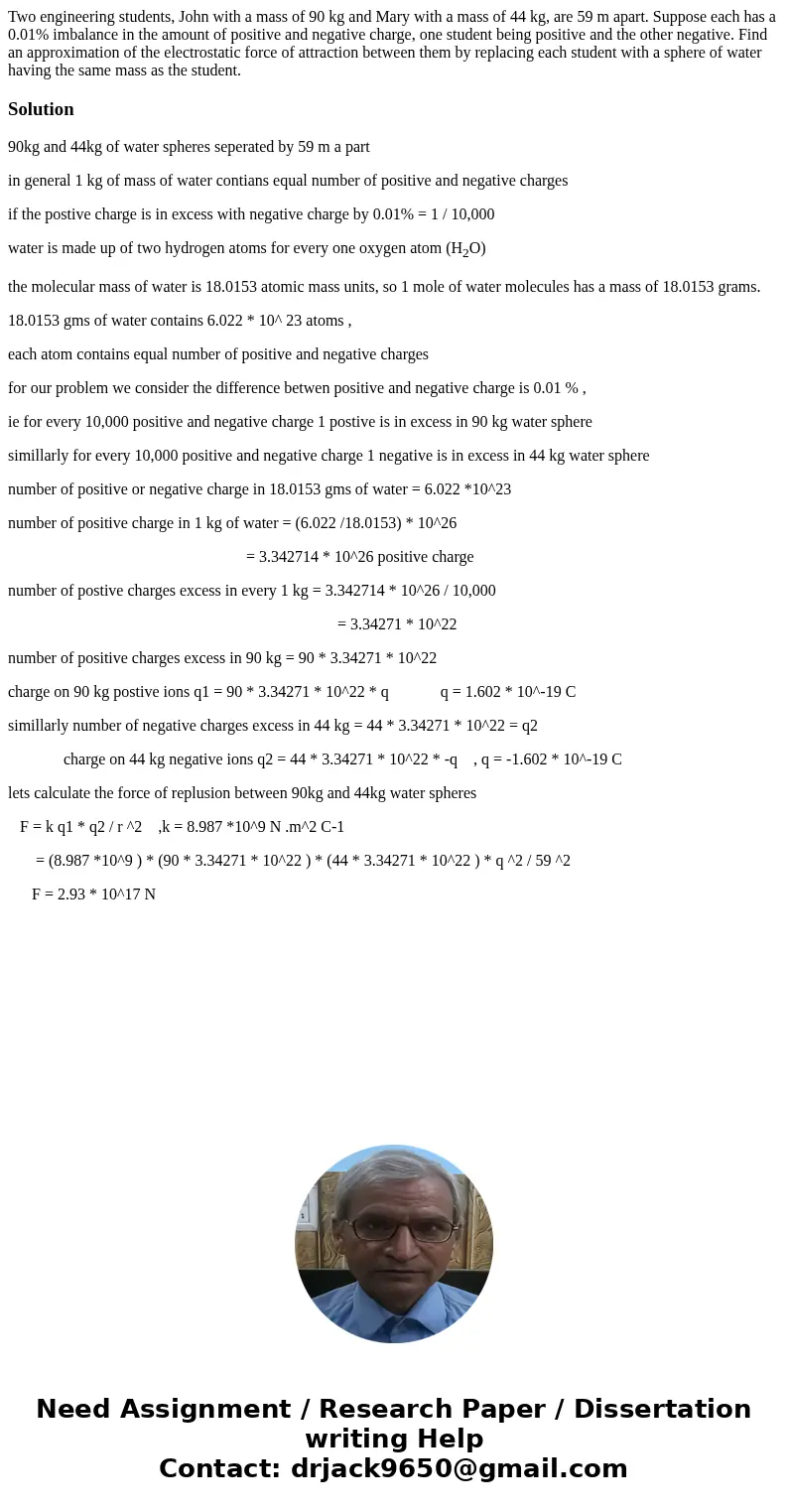Two engineering students John with a mass of 90 kg and Mary
Solution
90kg and 44kg of water spheres seperated by 59 m a part
in general 1 kg of mass of water contians equal number of positive and negative charges
if the postive charge is in excess with negative charge by 0.01% = 1 / 10,000
water is made up of two hydrogen atoms for every one oxygen atom (H2O)
the molecular mass of water is 18.0153 atomic mass units, so 1 mole of water molecules has a mass of 18.0153 grams.
18.0153 gms of water contains 6.022 * 10^ 23 atoms ,
each atom contains equal number of positive and negative charges
for our problem we consider the difference betwen positive and negative charge is 0.01 % ,
ie for every 10,000 positive and negative charge 1 postive is in excess in 90 kg water sphere
simillarly for every 10,000 positive and negative charge 1 negative is in excess in 44 kg water sphere
number of positive or negative charge in 18.0153 gms of water = 6.022 *10^23
number of positive charge in 1 kg of water = (6.022 /18.0153) * 10^26
= 3.342714 * 10^26 positive charge
number of postive charges excess in every 1 kg = 3.342714 * 10^26 / 10,000
= 3.34271 * 10^22
number of positive charges excess in 90 kg = 90 * 3.34271 * 10^22
charge on 90 kg postive ions q1 = 90 * 3.34271 * 10^22 * q q = 1.602 * 10^-19 C
simillarly number of negative charges excess in 44 kg = 44 * 3.34271 * 10^22 = q2
charge on 44 kg negative ions q2 = 44 * 3.34271 * 10^22 * -q , q = -1.602 * 10^-19 C
lets calculate the force of replusion between 90kg and 44kg water spheres
F = k q1 * q2 / r ^2 ,k = 8.987 *10^9 N .m^2 C-1
= (8.987 *10^9 ) * (90 * 3.34271 * 10^22 ) * (44 * 3.34271 * 10^22 ) * q ^2 / 59 ^2
F = 2.93 * 10^17 N

 Homework Sourse
Homework Sourse